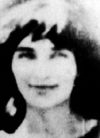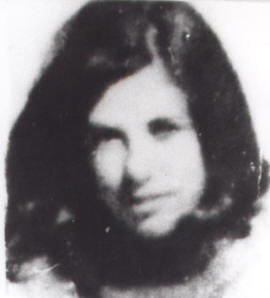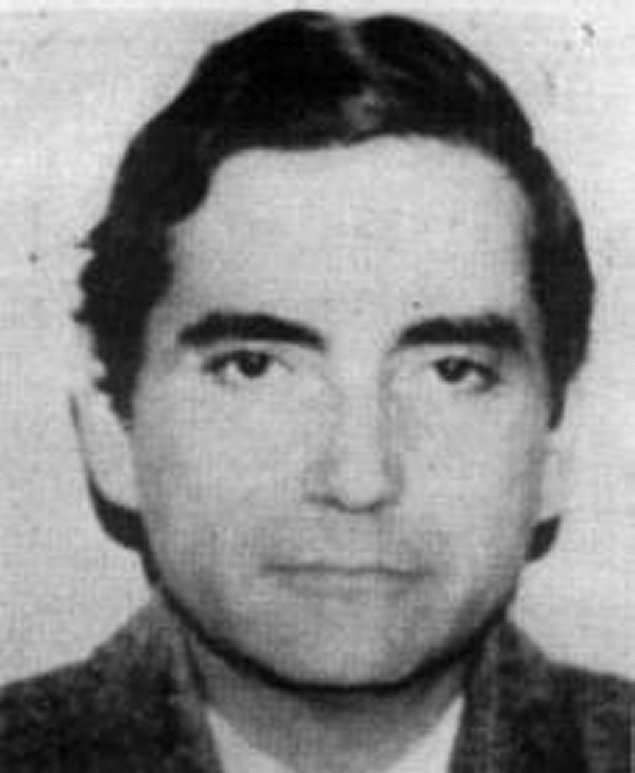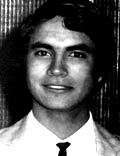A Spanish translation of my book review published in Ceibo Ediciones http://www.ceiboediciones.blogspot.com/2013/12/venceremos-chile-un-viaje-traves-de-la.html
Siguiendo el relato macabro 'La Danza de los Cuervos: El Destino final de de los Detenidos desaparecidos ", que describe la tortura y exterminio de opositores de la dictadura llevaron a cabo en Cuartel Simón Bolívar, el último libro de Javier Rebolledo,' El despertar de los Cuervos. Tejas Verdes, el origen del exterminio en Chile "(Ceibo Ediciones, 2013) ofrece una descripción detallada de la formación de la DINA en Tejas Verdes - el lugar donde se llevó a cabo la experimentación de la tortura en los primeros días de la dictadura.
El prólogo del libro describe la perversidad como un término inadecuado en relación a las atrocidades de la dictadura cometidos en Chile. Con la plena verdad de horrores aún ocultos a la nación, el tema de la tortura, exterminio y desaparición está envuelto en varios niveles de anonimato - el anonimato impuesta por la DINA sobre los desaparecidos, torturadores, cuya identidad todavía no divulgada, y las víctimas de tortura que se resisten a revelar sus cuentas y añadir al marco memoria colectiva chilena.
Alternando entre los testimonios de sobrevivientes de la tortura, la información de los documentos de investigación oficial y el comentario crítico, cuenta de Tejas Verdes de Rebolledo valida su declaración anterior insistir en la diferencia entre la información convencional sobre atrocidades y testimonios de sobrevivientes. La deshumanización de los detenidos a través de diversas formas de tortura, la degradación, la manipulación de la cultura y la negativa a reconocer la identidad individual de los detenidos crearon relatos desgarradores vacilantes entre la necesidad de reconocimiento y las experiencias que la DINA trató de sumir en un imposición generalizada del olvido con el fin de consolidar la impunidad.
La importancia de las Tejas Verdes ha sido eclipsado por otros centros de tortura infames como Londres 38 y Villa Grimaldi, así como por las operaciones llevadas a cabo por la DINA que implica el exterminio de militantes del MIR y del Partido Comunista, como la Caravana de la Muerte y la Operación Colombo. Sin embargo, antes de la creación oficial de la DINA, los opositores políticos de Augusto Pinochet ya estaban siendo torturados y desaparecieron de Tejas Verdes - la tortura y el exterminio centro primario en la historia de la dictadura chilena.
Tejas Verdes sirvió de iniciación a la tortura y el centro de coordinación de otros centros de tortura y exterminio en Chile. La mayoría de los torturadores recibían su instrucción en Tejas Verdes - nombres como Marcelo Moren Brito, Miguel Krassnoff Martchenko, Ricardo Lawrence y Cristian Labb é ocupan un lugar destacado en la historia de la dictadura. Operando bajo diversas brigadas de agentes de la DINA se encargaron de las operaciones de inteligencia, la orientación específica de MIR y militantes del Partido Comunista, la seguridad y las operaciones clandestinas de exterminio de opositores de la dictadura. De especial mención es el papel de Brito en la Caravana de la Muerte y las prácticas de tortura de Krassnoff en Londres 38. Brigada Halcón, que funcionó en Londres 38, también estuvo involucrado en el secuestro, tortura y asesinato de Víctor Díaz que tuvo lugar al Cuartel Simón Bolívar. El refinamiento de la tortura se practica en otros centros de tortura como la Clínica Santa Lucía - una cuestión examinada por Patricio Bustos Streeter indica un continuo intento de borrar los errores anteriores y cultivar un elaborado impunidad. Rebolledo también discute la existencia de Brigada Mulchén, bajo el mando de Cristian Labbé - una brigada relativamente desconocido involucrado en operaciones clandestinas, pero cuya complicidad ha sido difícil de probar, además del asesinato del diplomático español Carmelo Soria en 1976.
Rebolledo muestra cómo, a pesar de las investigaciones judiciales iniciadas por el juez Alejandro Solís, ha sido imposible determinar el número de detenidos en Tejas Verdes. Lo que surgió, sin embargo, eran los detalles de una red de terribles torturas encabezado por Manuel Contreras Sepúlveda - un testimonio del sadismo en el nombre de erradicar el marxismo de Chile. Los torturadores acusados por el juez Solís se presentaron como patriotas injustamente acusados, que supuestamente habían salvado a Chile de las garras de una dictadura comunista. A través de los vestigios expuestos de poder dictatorial durante los juicios de ex agentes de la DINA, como las amenazas de Contreras a juez Solís, es posible discernir los rasgos de una organización que opera con impunidad.
Los testimonios de Anatolio Zárate, Ana Becerra, Olga Letelier y Feliciano Cerda, complementadas con otras narraciones recogidas de documentos de investigación oficial, retratan la extensión de violaciónes de derechos humanos que los agentes de la DINA complacen pulg Las sesiones de tortura fueron diseñados para crear una barrera de magnitud inmensa entre torturador y detenido, entre los detenidos y la humanidad. Sobrevivientes de la tortura describen las descargas eléctricas a través del uso de la parrilla, la violencia y la coacción sexuales, palizas, simulacros de ejecución, la inserción de los ratones y arañas en la vagina, la mutilación genital, el uso de perros en la tortura sexual, las mutilaciones, amputaciones y cauterización crudo, violación en presencia de los miembros de la familia, el lenguaje degradante, así como la ingestión forzada de orina y heces. Motivos para la muerte en nombre de los detenidos se encontraron con brotes adicionales del tormento.
Los ex soldados que testificaron contra Contreras afirmó que los detenidos fueron atraídos a Tejas Verdes en la premisa de 'discutir' puntos de contención, que se imparte en una carta oficial.Detenidos prospectivos suelen cumplirse y no mostraron resistencia, descubriendo a su llegada a la naturaleza de la supuesta discusión de la DINA. Algunos fueron asesinados tras el pretexto inventado de intentar escapar, otros que expresaron sus temores de ser asesinado, como detenido Lucho Normabuena, se desapareció de forma sistemática. Los profesionales médicos que intentaron inscribir la verdad acerca de la causa de la muerte fueron detenidos en Tejas Verdes. Los detenidos fueron obligados a escuchar o presenciar sus amigos torturados, mientras que la DINA se embarcó en planes con la esperanza de obtener información de los detenidos sobre otros militantes detenidos. Olga Letelier describe cómo normalmente se atendieron sesiones de tortura por un grupo de agentes de la DINA, alternando entre mirar y participar en la tortura.
El libro también se explaya acerca de la red de profesionales de la salud contratados para supervisar la tortura y dar instrucciones a los torturadores de la DINA en el reconocimiento de los umbrales individuales para reducir la posibilidad de asesinato durante una sesión de tortura. Con la mayoría de los torturadores médicos siguen beneficiándose de la impunidad, la sociedad chilena tiene que lidiar con una contradicción - que de confiar su salud a los médicos cuya complicidad en la tortura y el asesinato está todavía oculto. Una lista de los ex torturadores médicos aún practican su profesión ha estado circulando en Internet, en un intento por exponer más atrocidades de la DINA. La literatura sobre los torturadores médicos en el libro retrata explícitamente cómo la dictadura desfigurado la profesión. Entre otros, el libro de Rebolledo se refiere a Vittorio Orvieto Tiplisky, quien comenzó su carrera con la DINA de Tejas Verdes y más tarde participó en el exterminio de militantes en el Cuartel Simón Bolívar, enfermera Gladys Calerdon que administró inyecciones letales a los detenidos torturados antes de su desaparición y Roberto Lailhacar , quien recientemente admitió a la eliminación de seis desapareció opositores de la dictadura en los pozos en su propiedad en Curacaví.
Rebolledo ha legado otro tratado importante de la historia reciente de Chile. Afirma una declaración anterior de la autora chilena y sobreviviente de Tejas Verdes, Hernán Valdés, quien resumió Tejas Verdes así: "Todo lo que sabía acerca del mal hasta entonces era sólo caricatura, sólo la literatura. Ahora el mal ha perdido toda referencia moral. "Súplica de Pinochet durante décadas el olvido más tarde sirvió como un recordatorio de lo que la oposición de izquierda había luchado en contra. El olvido ya había sido implementado por la dictadura antes de cualquier convocatoria pública, como se evidencia a partir de la década de desapariciones de Tejas Verdes, la certeza de la impunidad, que se hizo alarde de una y otra vez a los detenidos torturados, las adopciones ilegales de los bebés que nacen a los detenidos a fin de eliminar rastros de violación en los centros de detención, los médicos que trabajaban bajo asumieron nombres, separando así su papel de verdugos del rol asumido dentro de los camarotes más amplios de la sociedad. El testimonio detallado y comentario en este libro demuestran que Tejas Verdes debería estar al frente de ninguna investigación detallada sobre la dictadura de Pinochet - es a través de una comprensión de Tejas Verdes como referencia primaria a la violación de los derechos humanos que se puede comprender la red de tortura prolongada y complicidad del Estado durante la dictadura chilena.
Publicado por Ramona Wadi




























